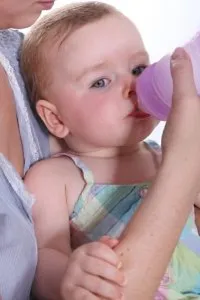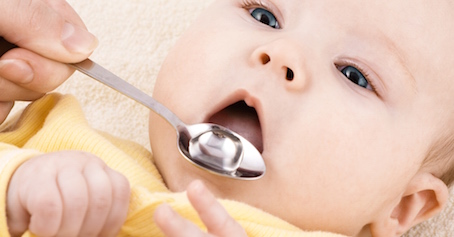ORS For Babies
When your child is suffering from diarrhoea or vomiting, he can lose body fluids quickly and become dehydrated. Small sips of water every few minutes work well, but in case of severe diarrhoea, quite a lot of fluids can be lost in a short time. ORS given at such a time can protect your baby from dehydration and its serious effects.
ORS stands for Oral Rehydration Solution. It is a solution of oral electrolytes given to children who are experiencing dehydration due to loss of body fluids in conditions such as diarrhoea and vomiting. ORS contains a mix of sodium, potassium, sugar and other important electrolytes needed by the body. When mixed and given in the right quantities, it can quickly replace the lost electrolytes and fluids to rehydrate the body.
When Does Your Baby Need Oral Rehydration Therapy?

Serious cases of dehydration are when ORS is given to infants. Most minor dehydration doesn’t need medical attention and can be treated with breast milk, water, formula and diluted juices. However severe dehydration caused by diseases such as viral gastroenteritis, also called stomach flu, needs ORS for treatment. Also, look for the following symptoms of dehydration in kids:
- Their eyes look sunken, dull or dry
- Their lips appear stretched or chapped
- Dry nappy with little or no urine
- They may be lethargic and fussy
- No tears when they cry
- Cold hands and feet
- Heartbeat is rapid
- Soft spots on their head
Benefits of Oral Rehydration Solution
ORS is a highly effective treatment for diarrhoea in babies. It can treat dehydration caused by loss of fluids that cannot be treated in time by feeding water alone. To understand how fluid absorption in the body works, the concept of osmolarity should be understood. Osmolarity is a measure of the concentration of dissolved salts in a fluid that can apply an osmotic pressure on the fluid. When two solutions of different osmolarity are placed in contact with each other, fluid from the low osmolarity solution flows to the high osmolarity solution. Similar to how raisins soaked in water swell up after a while.
- It contains the precise ratio of ingredients, and hence, used instead of sports drinks, pediatric electrolytes and IV hydration
- No need for injections or IV transfer
- It can be self-administered
- ORS gives results within minutes of consumption
- It can be used to proactively avoid dehydration
- Studies have shown that it is safe for all age groups
What Are Oral Rehydration Salts Available as?
They are usually available in the form of oral rehydration powder or pre-mixed bottles available in pharmacies, health centers, markets, and shops. Normally one sachet is to be mixed with 200 ml of water and given to the baby. To maximize the effectiveness of the powder, it needs to be mixed with exactly the right amount of water specified on the sachet. All ORS powder contains a little bit of sugar and there is no need to add anything extra to it. The powders are usually cheaper and have a longer shelf life. Some of the commercial ORS brands include Inflate, Pedialyte, Resole etc.
How to Give ORS to Infants
- Pour the powder into 200 ml of water that is boiled and cooled. Stir well until the powder completely dissolves and the water looks slightly cloudy.
- Give your child the ORS in small and frequents amounts using a spoon, feeder or dropper. Ensure the first doses are small. Small amounts allow the child to better retain the solution without vomiting.
- Gradually give them more until your child has had the full dose that is recommended to them. Allow them to take it at their own pace.
- If the child refuses to drink, use a syringe to squirt the ORS into their mouth.
- In rare cases involving hospitalization, a child refusing to drink might be fed through a naso-gastric feeding tube.
What Quantity of ORS Your Child Requires
It’s easy to think that our babies need to drink as much as possible to replenish the lost fluids. However, they may be vomiting and unwilling to consume even the recommended amount in one go. This reference is a standard one to follow for oral rehydration salts dosage:
- children under 2 years of age: 50-100 ml (a quarter to half a large cup) of fluid
- children aged 2 up to 10 years: 100-200 ml (a half to one large cup)
- older children and adults- as much fluid as they want.
What to Do if Oral Rehydration Salt is Not Available
If ORS is unavailable at the chemist or you do not have any ingredients at hand, rush your child to the pediatrician or the hospital. Dehydration in infants can be fatal, so act quickly.
How to Prepare ORS Solution at Home
A simple ORS solution can be made at home with the following procedure:
Ingredients:
- Six (6) level teaspoons of sugar
- Half (1/2) level teaspoon of salt
- 1 liter of clean drinking water or boiled and cooled water
How to Make:
Add the sugar and salt to a bowl and pour the water into it. Mix until it has fully dissolved. You can also add a little bit of mashed banana for some extra potassium. It is imperative that you get the proportions right. Adding too much salt or sugar can render it ineffective or worsen diarrheic.
SHIJINA RIJESH
